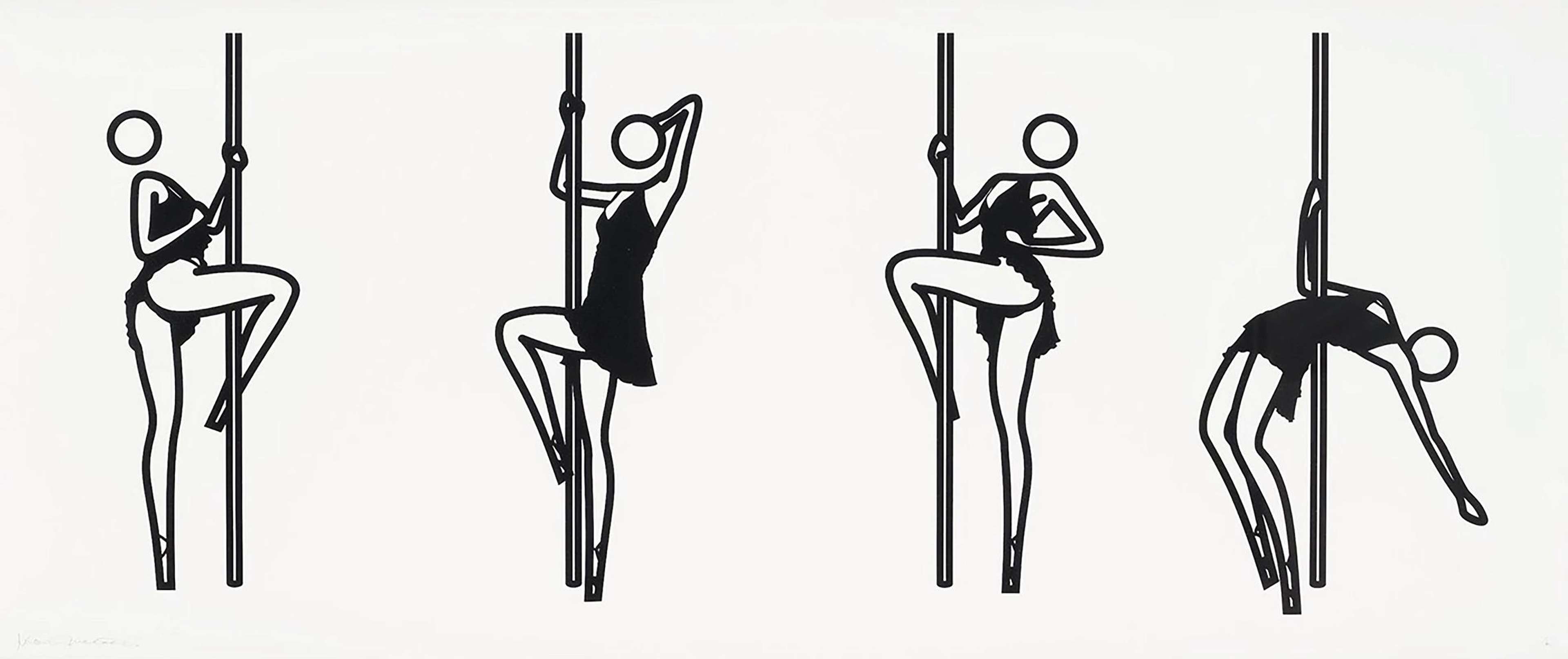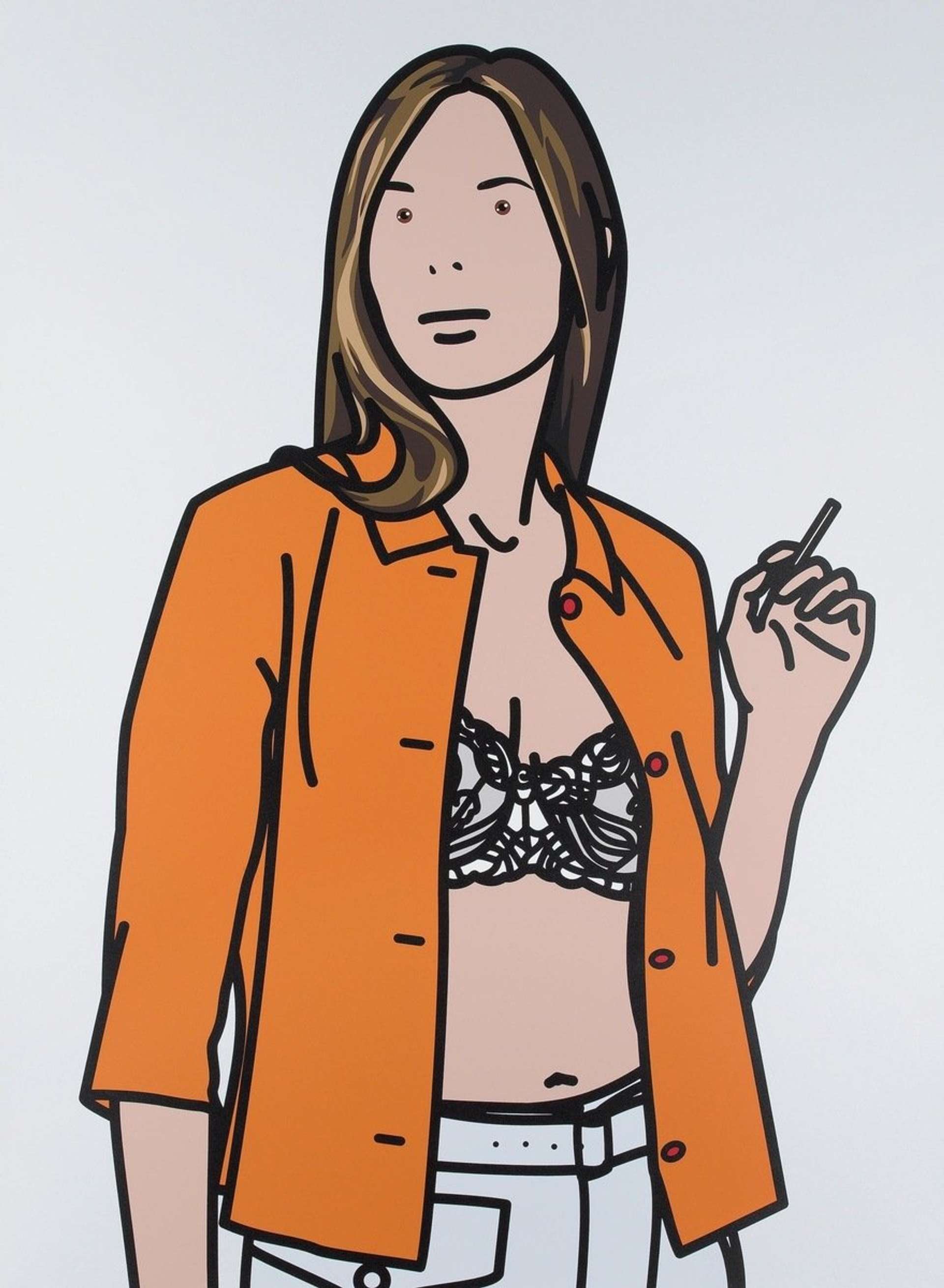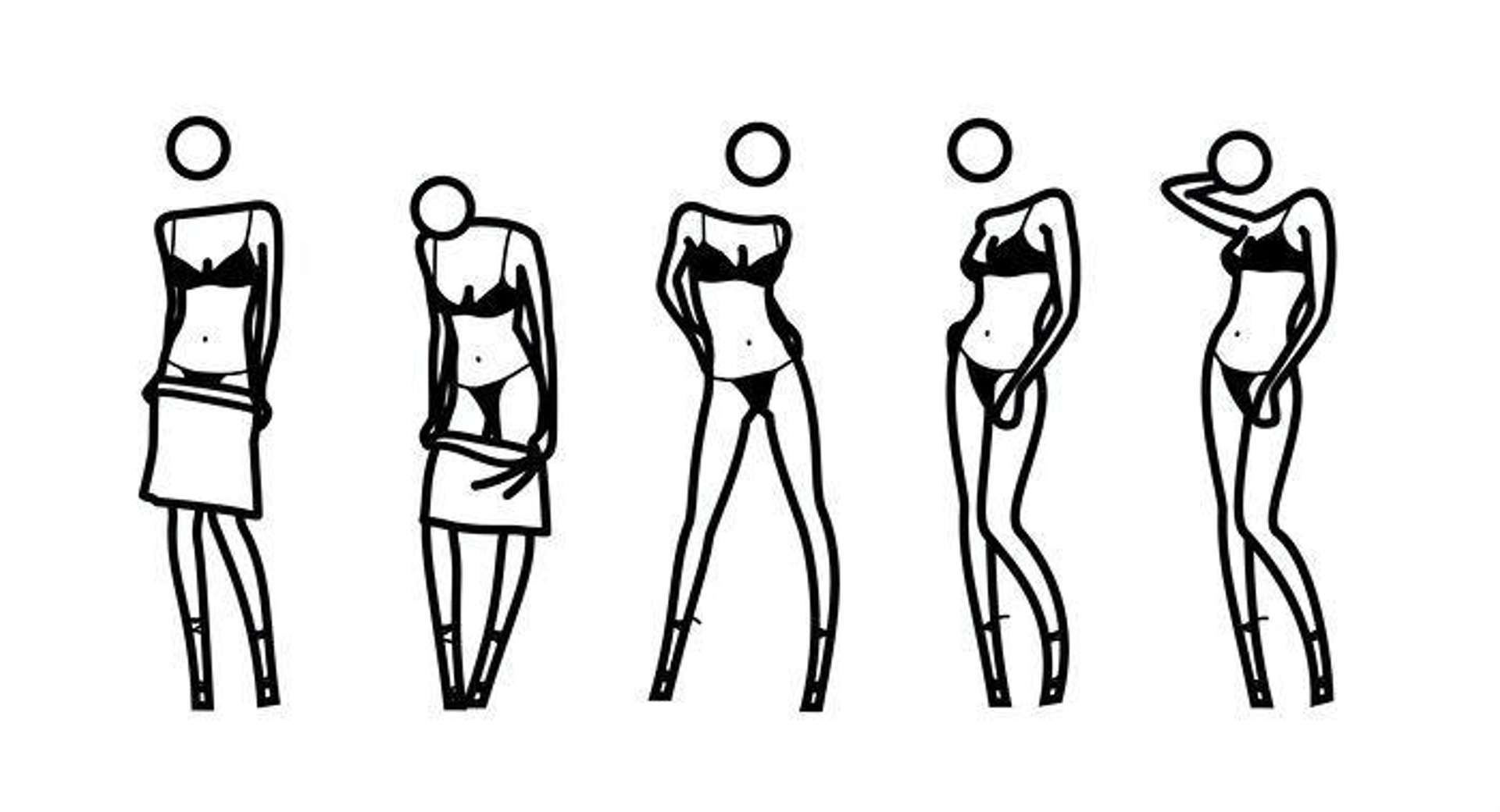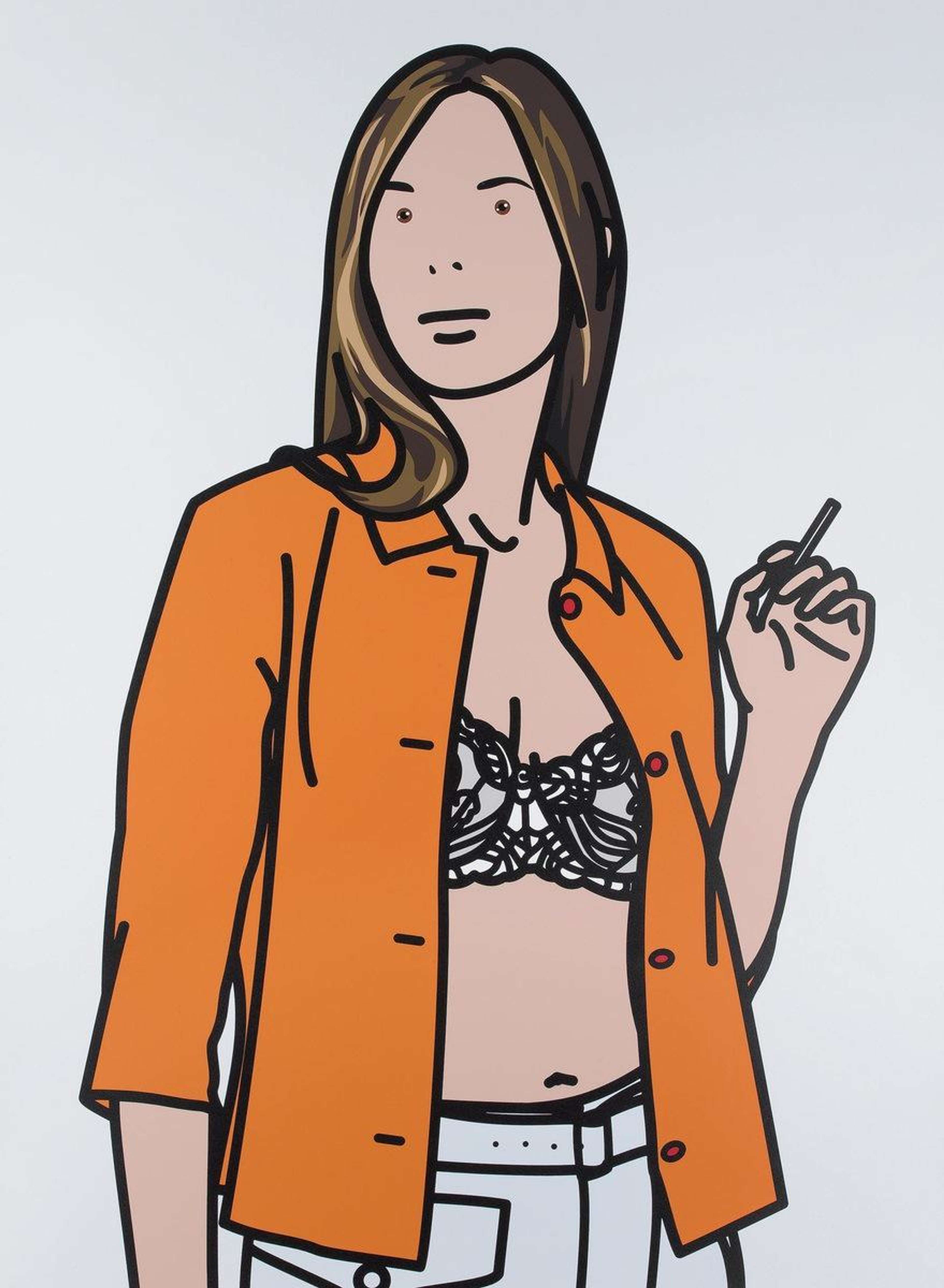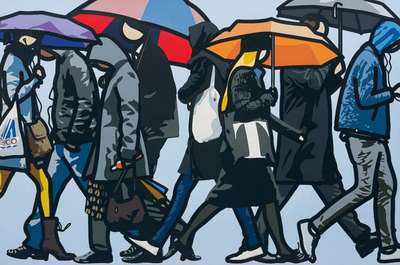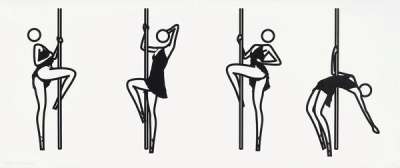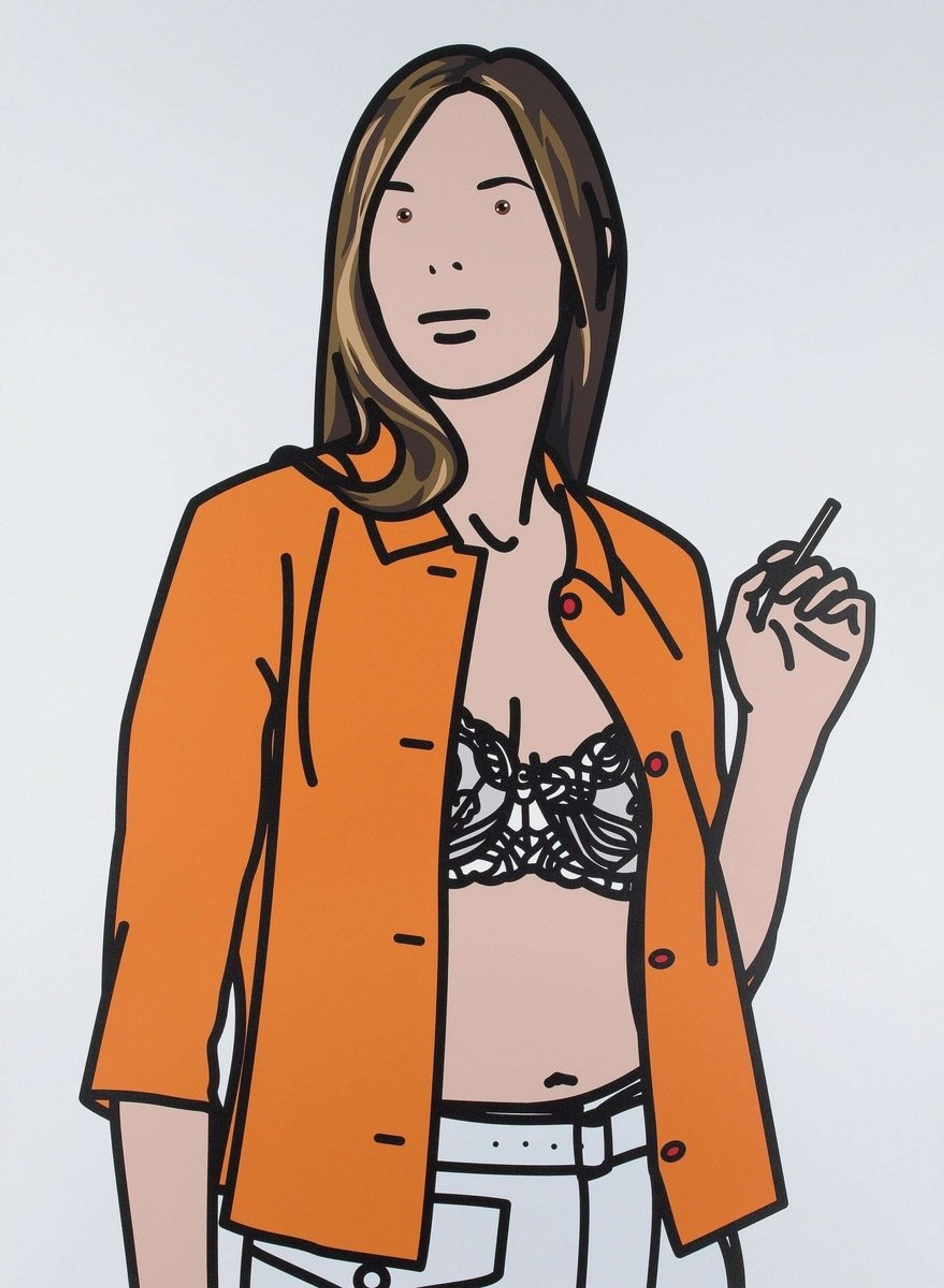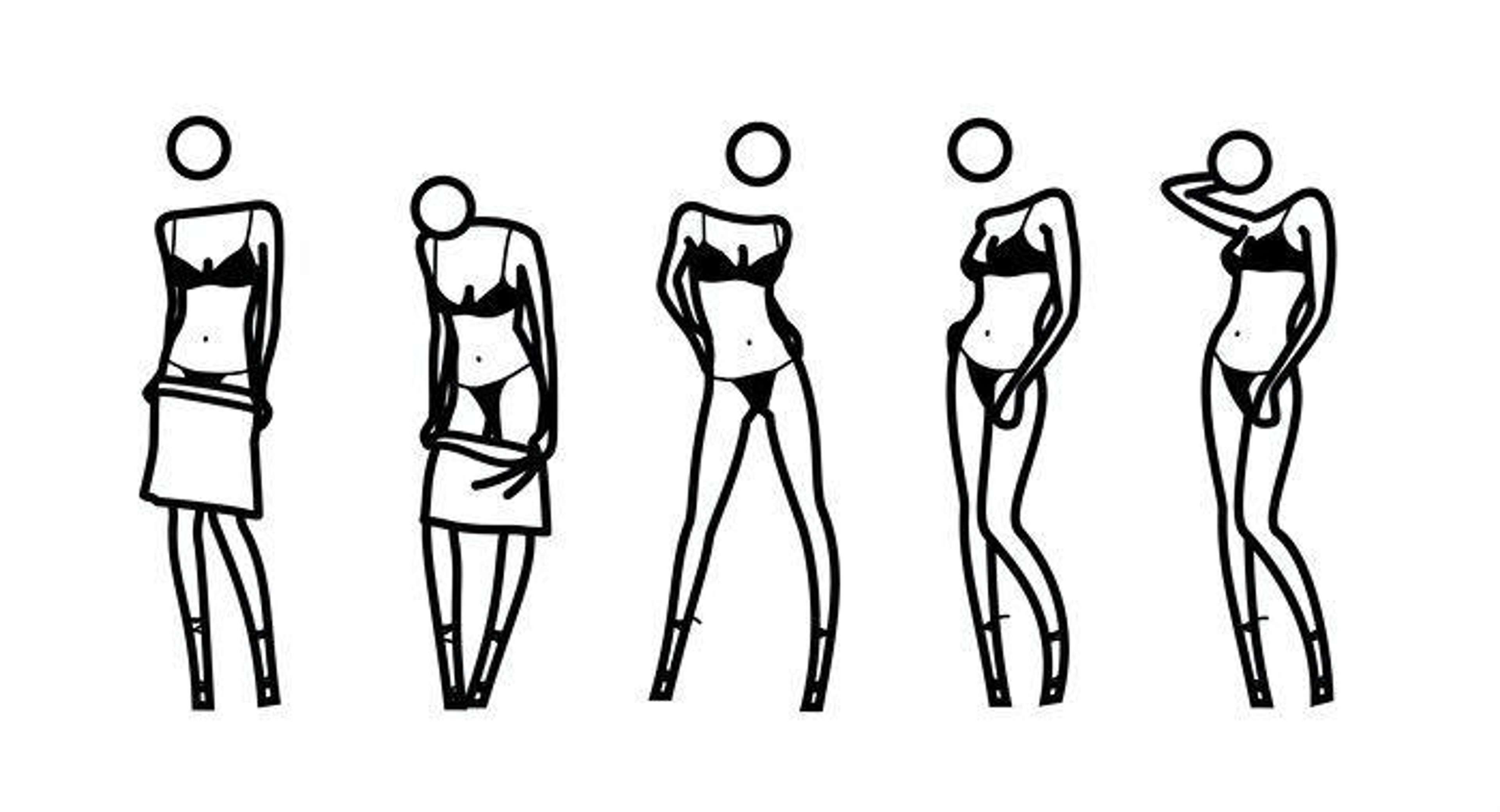 Walking In The Rain, London © Julian Opie 2015
Walking In The Rain, London © Julian Opie 2015
Interested in buying or selling
Julian Opie?

Julian Opie
295 works
Whether digital or sculptural, Julian Opie’s work is immediately recognisable and strikingly contemporary. Outlined in black and often blank faced, the artist’s figures in particular encapsulate his unique style, born from both Pop Art and Minimalism, which has brought him critical and commercial success since he emerged as part of the New British Sculpture Movement in the 1980s.
Here we take a look at Opie’s work from a buyer’s perspective and discuss when to invest, and where new collectors might choose to begin.
Is Julian Opie a good investment right now?
With major public commissions of his work appearing on the streets of London, New York and Tokyo over the last decade, Opie is one of the leading contemporary artists alive today. Accordingly, his work has been in steady demand on the primary and secondary market for a while now with prices for his work at auction rising significantly in the last three years – in 2019 his sales totalled at around $2.4million – suggesting perhaps that the market for this artist is opening up again, after a small lull at the beginning of the 2000s, as younger generations rediscover his work.
As stocks and shares roil from the effects of the Coronavirus pandemic, art may seem like a surer bet to investors looking to protect their assets in years to come. And while the art market might be suffering from a slight setback in sales this year, specialists are confident it will soon bounce back to normal as curators, art fairs and gallerists find innovative ways of bringing art to a global audience via digital technology, a medium which Opie is very much at home in.
While Opie’s work has been achieving high numbers of total sales at auction, more pieces are being offered back to the market, which in turn gives the buyer more choice and encourages more activity on the secondary market.
Which works are most well known?
Whether a reclining nude or a woman walking, Opie’s figures are a constant presence throughout the artist’s oeuvre, which spans prints, digital editions and sculpture. He is also well known for his portraits – which take obvious inspiration from Andy Warhol’s depictions of celebrities such as Marilyn Monroe and Jackie Kennedy in the latter half of the 20th century – and most famously his award winning quadruple portrait for Blur’s The Best Of album. This led to other high profile commissions, such as a portrait of James Dyson for the National Portrait Gallery, and an increase of interest in this new style, which differs from his usual figures by including facial features.
Among his most popular figures are sexualised images of women, often depicted in a state of undress, or pole dancing. His less overtly erotic nudes tend to reference art historical precedents or fashion photography while his more recent work often depicts crowds of figures, clothed and caught up in the trappings of city life.
How can you tell if it’s a genuine Opie?
While a print, painting or sculpture can be signed and carefully documented, digital editions – or indeed lenticular prints, which the artist is also known for – can be mass produced.
Genuine works will usually be accompanied by a certificate of authentication or the relevant paperwork that traces the work back to the original seller, which should be the artist or the artist’s gallery. You may also find that a signed catalogue is offered alongside the work to prove its exhibition and publication history as well as its authenticity. Works on screens can also have signed labels affixed to them. Whether it’s a signature, a label or a certificate, when buying from an auction house or trusted dealer there is no need for collectors to worry about a work’s authenticity as a specialist will have carried out due diligence checks before offering the piece for sale.
What is the price range for work by Opie?
Works by Opie tend to range from around $5,000 to $500,000 with around 47% of works selling for around $10,000–50,000 and 30% selling at $50,000–100,000. In terms of his contemporaries this is comparable to artists such as Mel Bochner and Donald Sultan.
As with most artists, Opie’s multiples tend to offer the most accessible entry point to his work compared to his sculptures and paintings.
In the spirit of Keith Haring (and now Banksy), Opie has also opened his own version of the Pop Shop which sells postcards, publications and merchandise in unlimited editions from as little as £1.
What should I know about the work’s condition before buying?
You should always make sure that the work being sold to you is in pristine condition. If you are viewing the work in person you can request to see it in raking light which will reveal any imperfections. You should also request to see the work unframed and take a good look at the back of the piece as this can tell you a lot about the work’s condition. Common signs of damage include distortions, stains, tears, fading or discolouration, creases, scratches and tape residue. You can also ask for a condition report conducted by a professional.
It is usually the responsibility of the seller to ensure a condition check has taken place, but in case of any suspected damage, it’s best to ask an expert to provide a condition report and advise on next steps.
Julian Opie’s prints vary from silkscreens and lithographs with unique colours on wove art paper, to digital prints on inkjet paper. Both should have a crisp resolution which is far superior to a cheap replica or a poster. Opie also produces digital editions as well as multiples on canvas which all have various specificities that are important to think about when considering a work’s condition. Again, ask us and we will connect you with the expert that can help with this.
How should I look after an Opie?
Once you have bought a work by Opie, it’s important to look after it, not just to protect the value of your investment, but for future generations. Any prints and canvases should be kept in a dark place away from sunlight. Works on paper should have UV-protective glass framing.
Some collectors go as far as keeping their prints lying flat in a dark place in order to optimise value, however, art is made to be seen so inevitably some compromise will have to be made when it comes to displaying and preserving a piece. Ensure the work has been inspected carefully before buying and consult an expert if you are in any doubt. Reputable conservators and framers can offer further advice on how best to hang the work in your home.
Why use MyArtBroker to find work by Opie?
At MyArtBroker we offer a safe and simple solution to buyers, connecting you directly with our expert brokers, who, whether you’re a new or seasoned collector, can assist you in purchasing a work by Opie.
Your personal broker will work with you to find the piece you’re looking for at the price you’re willing to pay through our large network of collectors looking to buy and sell daily. Our experts will also condition check and authenticate artworks, so you can have confidence before you buy, as well as helping to arrange delivery.
We offer both the sense of trust and comfort that comes with meeting with a specialist personally, as well as the efficiency, transparency and ease of an online process.
Our network
Our global network consists of over 30,000 collectors buying and selling works daily, as well as dealers, collectors, galleries and independent experts globally that work with us to ensure we can offer authentic Julian Opie works in good condition. Our website has 40,000 visitors every month, and we regularly publish pieces tracking the artist’s market performance, keep up to date with new works, auction results and news, as well as offering an updated artist biographyand informative essays on all Opie editions.
MyArtBroker has access to a worldwide network of art collectors selling Opie artworks, so get in touch with us today if you’re interested in buying an Opie print and we’ll talk you through the process.
